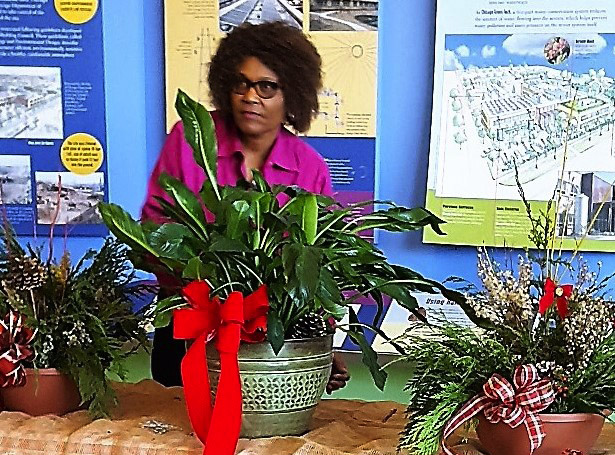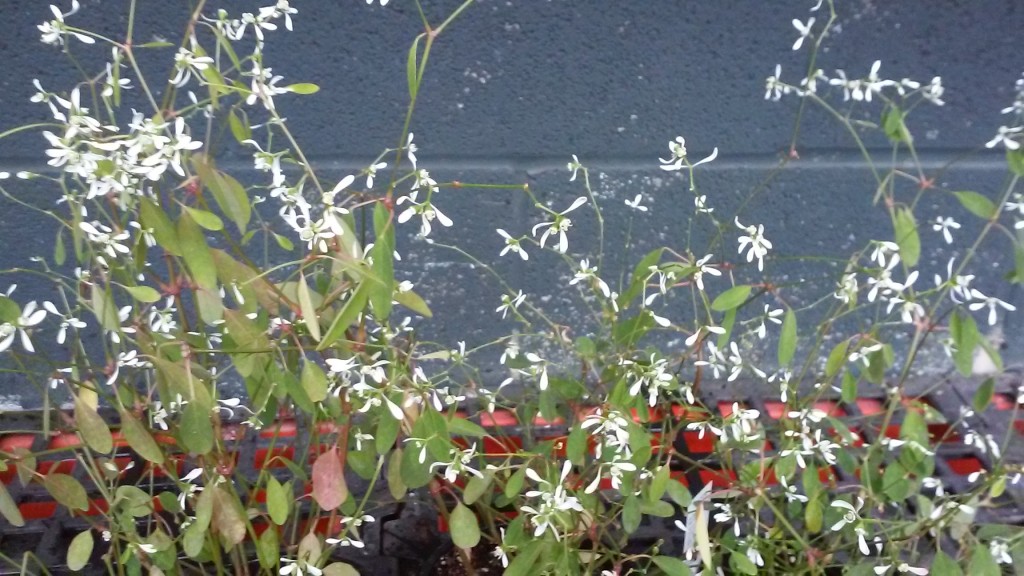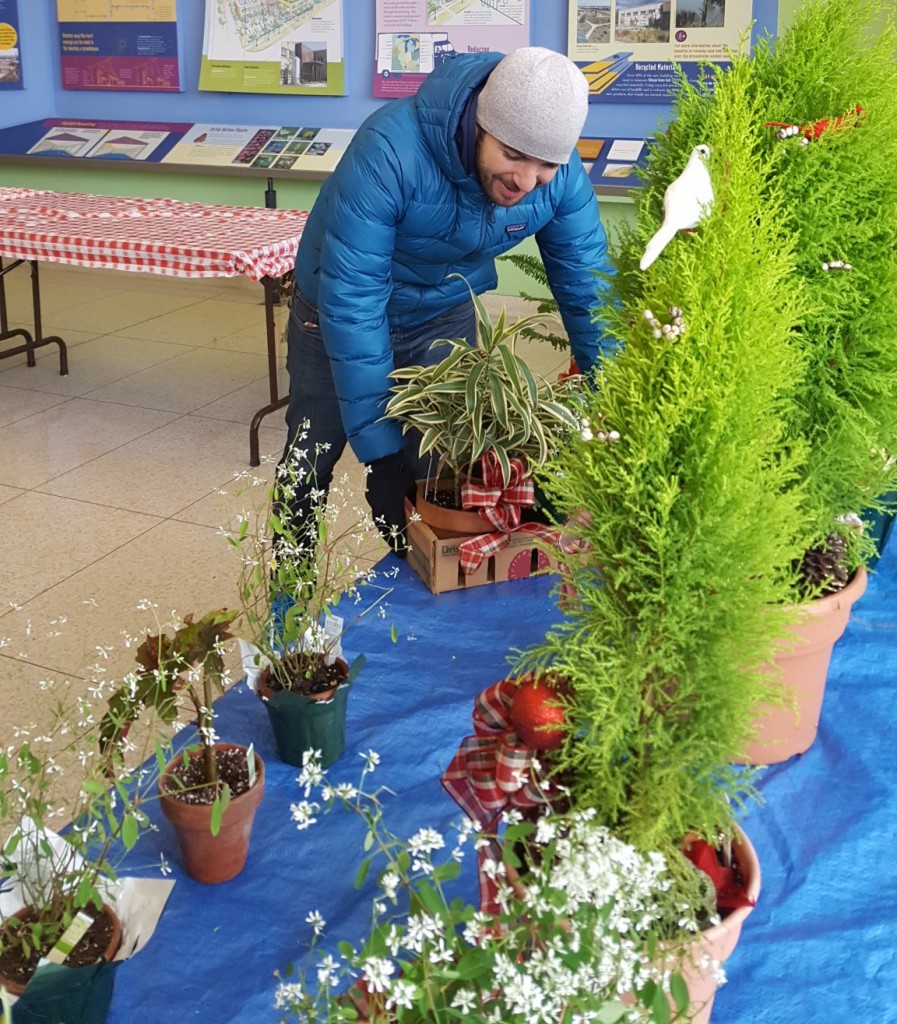Holiday Plant Sale Wrap Up & Growing Tips
Avid CCGA gardeners don’t stop growing things when temperatures fall and days shorten. Folks came out in the snowy weather to the Holiday Plant Sale last weekend at the Center for Green Technology and found warm cider from NeighborSpace and packs of free bulbs waiting upon their arrival.

The CCGA Resources Committee knows how to deck out a bit of greenery in holiday style with festive ribbons and berries and shimmery, small ornaments on delicate branches. They definitely brought on the spirit. The tables held lots of leafy foliage and gardeners left with boxes or arms full of plants. The sale attracted a diverse group of gardeners from all over the city including one young woman who emigrated from Poland and a college student from Brazil. As always, the Resources Committee pledges to use the proceeds from the sale to purchase tools, seeds, plants, and bulbs that will be distributed to Chicago community gardeners. Special thanks to those fine folks in Resources and also to Robert Hart for the photos he captured.
Check out our slideshow of the event on Facebook.
Some people have such a green thumb that an indoor garden in a light filled room with Peace lilies, striking succulents, dracaenas, and asparagus ferns just comes naturally. Here are a few growing tips from the seasoned experts who propagated and tended the plants available during the sale.
Many plants such as begonias can be brought inside as houseplants and taken outside again in spring.

During the winter, indoors, grow our Euphorbia ‘Glitz’ in full sun (at least 6–8 hours of direct light a day), keep the soil nearly dry, and withhold any commercial fertilizer. During the rest of the year, water when the top 1 inch of potting mix is dry and apply compost in early summer. Protect your plant from strong summer rays by moving it to partial shade. Like Poinsettia, these Euphorbias contain a milky sap that may irritate sensitive skin.
Peace lilies most commonly have dark green leaves and white “flowers.” What most people think of as the flower is actually a specialized leaf bract that grows hooded over the flowers. Like many popular indoor plants, they enjoy medium to low light. Peace lilies that are placed in more light tend to produce the lovely white spathes and flowers more often, while specimens in low light will bloom less and resemble a traditional foliage plant. A common mistake in the care of peace lilies is overwatering. They are far more tolerant of underwatering than overwatering, which is one of the most common reasons for a peace lily to die. Rather than water on a schedule, try checking them once a week. Simply touch the top of the soil to see if it is dry, and water if it is. If the soil is still damp, the plant does not need to be watered. These plants are very drought tolerant.
 Chartreuse Monterey cypress trees may be new to CCGA but like many indoor container plants, they do best with cool temperatures, in the low 60’s during winter. The most difficult part of this cypress houseplant care is ensuring sufficient light. Select a window that provides good sunlight and turn the container regularly to give each side a turn. The houseplant requires 6 to 8 hours of direct sun, with 5 hours the minimum tolerated. Don’t forget water – essential cypress houseplant care – keeping the soil moist but not soaking wet to avoid root rot… or you’ll see brown needles appear if the humidity is too low.
Chartreuse Monterey cypress trees may be new to CCGA but like many indoor container plants, they do best with cool temperatures, in the low 60’s during winter. The most difficult part of this cypress houseplant care is ensuring sufficient light. Select a window that provides good sunlight and turn the container regularly to give each side a turn. The houseplant requires 6 to 8 hours of direct sun, with 5 hours the minimum tolerated. Don’t forget water – essential cypress houseplant care – keeping the soil moist but not soaking wet to avoid root rot… or you’ll see brown needles appear if the humidity is too low.
Geraniums are another plant that doesn’t do well in dark or overheated rooms. It overwinters best in a sunny window with temperatures in the 60’s, so place the pots in a bright, cool spot. Over the winter, pinch back the tips of new shoots to help them branch out. Apply compost to your geraniums in mid-spring when you move them outdoors. Move them back outdoors after all danger of frost has passed. You can keep them in their containers, or plant them back in your flower beds.
When in doubt, Philip’s advice on plant care is quite concise: Prune, rotate, and don’t over water.
And as always, if you have questions, don’t hesitate to reach out online via our Facebook page.
P.S. Additionally, a great selection of links to horticultural organizations and also compact pieces on indoor gardening can be found here.
